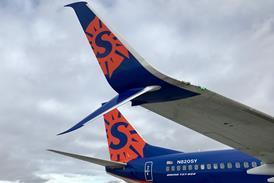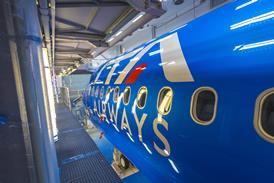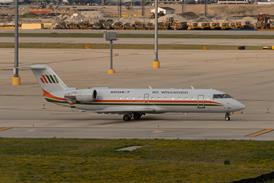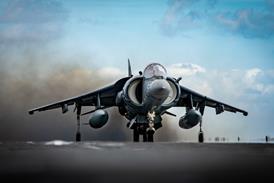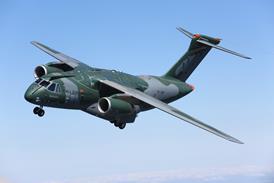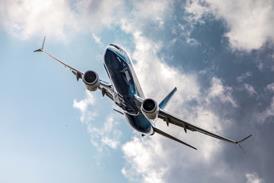GRAHAM WARWICK /WASHINGTON DC
Low-rate initial production is now under way to equip Boeing F/A-18E/Fs
BAE Systems' US arm has received a second production contract for Integrated Defensive Electronic Countermeasures (IDECM) systems as the US Navy begins operational evaluation (opeval) of the internal jamming suite for the Boeing F/A-18E/F Super Hornet. The US Air Force is due to complete operational tests of the IDECM in the Rockwell B-1B by year-end.
Operational testing involves only the ALQ-214(V) radio-frequency countermeasures (RFCM) portion of the IDECM as technical delays and budget shortfalls have pushed evaluation of the system's ALE-55 fibre-optic towed decoy (FOTD) into 2003. After restructuring the IDECM programme in 1998 and again in 1999, because of technical problems and cost overruns, BAE Systems is "confident [the ALQ-214(V)] will get through opeval on the effectiveness side", says programme manager Joe Mancini.
IDECM was restructured into three phases. Block 1 is an interim system combining the current ALQ-165 Airborne Self-Protection Jammer (ASPJ) and ALE-50 repeater decoy. This will be fitted to USN F/A-18E/Fs for the first three operational deployments only, beginning later this year. Block 2, a second interim configuration, replaces the ASPJ with the ALQ-214(V)2. This is the configuration to be tested during opeval and is planned for the fourth and fifth F/A-18E/F deployments.
Mancini says operational testing will focus on the IDECM's jamming capability using onboard transmitters. "The ALE-50 is just a repeater, independent of the ALQ-214. With the ALE-55 we will be able to send jamming techniques down to the decoy," he says. On the F/A-18E/F, the ALQ-214(V)2 is integrated with the mission computer, radar warning receiver and chaff/flare dispensers, and generates jamming techniques for high- and low-band transmitters.
Block 3, the final configuration for the F/A-18E/F, will bring together the RFCM and FOTD elements of the IDECM. On the USAF's B-1B, the ALQ-214(V)1 will replace the bomber's ALQ-161 jamming system, operating with low-band transmitters and the ALE-50 decoy. The US Air Force also plans to integrate the ALE-55 FOTD with the Boeing F-15's ALQ-135 jamming system.
BAE's Information & Electronic Warfare Systems unit in Nashua, New Hampshire, so far has two low-rate initial production contracts totalling $117 million to produce 20 onboard systems, plus 30 decoys, with deliveries to begin in 2003 for the F/A-18E/F. First deployment with the Block 2 system is scheduled for August 2003.

Source: Flight International

